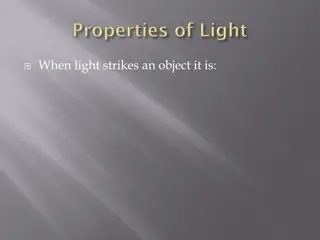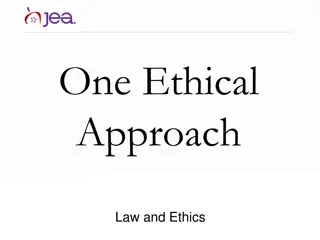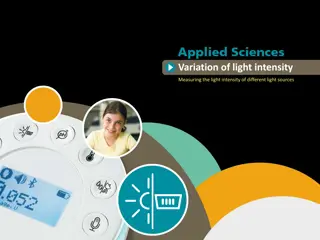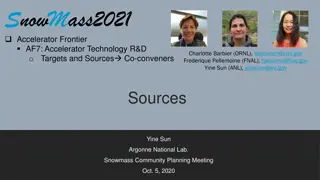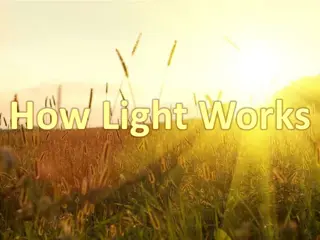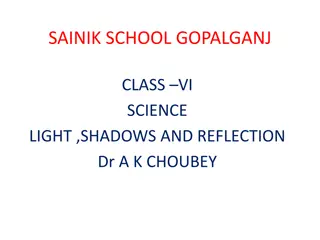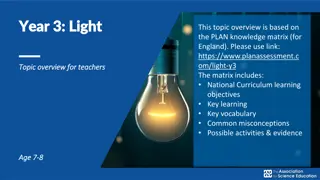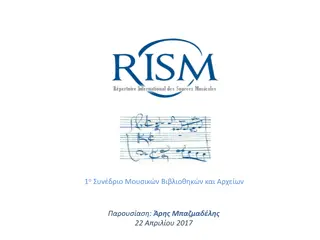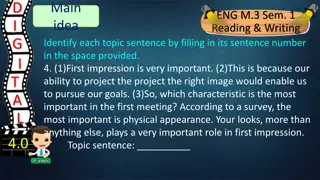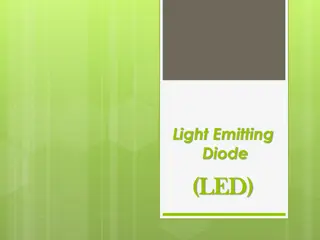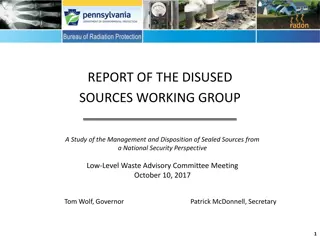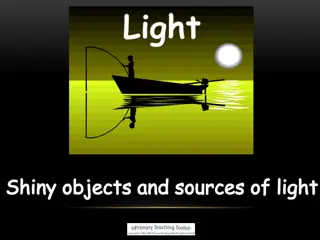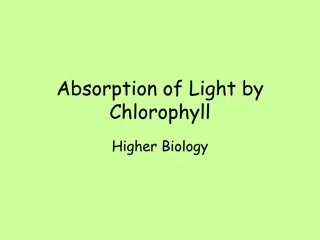
Light Sources: Evolution and Discoveries in Synchrotron Radiation Research
Explore the fascinating world of light sources in synchrotron radiation research, from fundamental principles to the first observations and generations of dedicated operations. Discover how bending electrons emit radiation, leading to groundbreaking advancements in the field. Uncover the history of synchrotron radiation discoveries and learn about the characteristics of different generations of light sources, including their parameters and applications.
Download Presentation

Please find below an Image/Link to download the presentation.
The content on the website is provided AS IS for your information and personal use only. It may not be sold, licensed, or shared on other websites without obtaining consent from the author. If you encounter any issues during the download, it is possible that the publisher has removed the file from their server.
You are allowed to download the files provided on this website for personal or commercial use, subject to the condition that they are used lawfully. All files are the property of their respective owners.
The content on the website is provided AS IS for your information and personal use only. It may not be sold, licensed, or shared on other websites without obtaining consent from the author.
E N D
Presentation Transcript
Special Topic: Light Sources Eric Prebys USPAS, Knoxville, TN, Jan. 20- 31, 2014
There are a lot more light sources than frontier research machines Wikipedia lists about 60 light sources worldwide 2 Special Topic: Light Sources USPAS, Knoxville, TN, Jan. 20-31, 2014
Fundamental Principle Bending electrons emit radiation along their path 2 1 e c P = 4 2 6 0 2 3 3 c = = where ; x crit crit 3 Special Topic: Light Sources USPAS, Knoxville, TN, Jan. 20-31, 2014
First Observation of Synchrotron Radiation Synchrotron Radiation was first searched for in 1944 at GE s 100 MeV electron Energy loss was seen, but because of a calculational error, they searched in the microwave region and missed the visible light, because the acceleration chamber was opaque In 1947, John Paul Blewett got permission to build a 70 MeV synchrotron at GE with transparent windows, and observed synchrotron radiation for the first time. 4 Special Topic: Light Sources USPAS, Knoxville, TN, Jan. 20-31, 2014
First Generation: Parasitic Operations Examples SURF (1961): 180 MeV UV synchrotron at NBS CESR (CHESS, 70 s): 6 GeV synchrotron at Cornell Numerous others Typically large emittances, which limited brightness of the beam 5 Special Topic: Light Sources USPAS, Knoxville, TN, Jan. 20-31, 2014
Second Generation: Dedicated Examples: 1981: 2 GeV SRS at Daresbury 1982: 800 MeV BESSY in Berlin 1990: SPEAR II becomes dedicated light source Often include wigglers to enhance SR ( =106 nm-rad) ( =38 nm-rad) ( =160 nm-rad) 6 Special Topic: Light Sources USPAS, Knoxville, TN, Jan. 20-31, 2014
Typical 2ndGeneration Parameters Beam sizes y~1 mm y ~.1 mrad x~.1 mm x ~.03 mrad Broad spectrum High flux Typicall 1013 photons/second/mradian for 3 GeV, 100 mA dipole source at Ecrit 7 Special Topic: Light Sources USPAS, Knoxville, TN, Jan. 20-31, 2014
Undulators Periodic Magnets In rest frame of electron = * U Electron oscillates coherently with (contracted) structure, and releases photons with the same wavelength. In the lab frame, this is Doppler shifted, so * = = U 2 2 2 So, on the order of 1cm X-rays. 8 Special Topic: Light Sources USPAS, Knoxville, TN, Jan. 20-31, 2014
Bends, Undulators, and Wigglers* *G. Krafft 9 Special Topic: Light Sources USPAS, Knoxville, TN, Jan. 20-31, 2014
3rdGeneration (Undulator) Sources High Brightness 1019 compared to 1016 for 2nd generation sources Emittance ~1-20 nm-rad 10 Special Topic: Light Sources USPAS, Knoxville, TN, Jan. 20-31, 2014
Summary of Parameters 11 Special Topic: Light Sources USPAS, Knoxville, TN, Jan. 20-31, 2014


